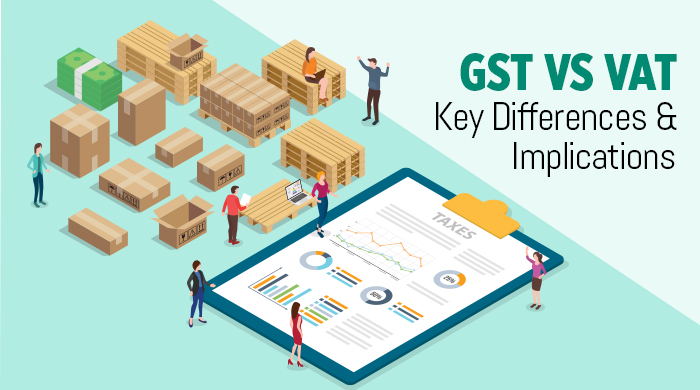GST vs. VAT: Key Differences and Implications

Goods and Services Tax (GST) and Value-Added Tax (VAT) are both indirect taxes levied on the consumption of goods and services. While they share some similarities, there are significant differences that can impact businesses and consumers. This blog post will delve into the key distinctions between GST and VAT, along with their implications, including the importance of GST Registration Assistance in Kerala for businesses navigating these tax systems.
Key Differences
- Structure
GST: A multi-stage tax system that is levied at every stage of the production and distribution chain. It involves a credit mechanism where businesses can claim a credit for the GST paid on inputs against the GST charged on outputs.
VAT: A single-stage tax system that is typically levied only at the final point of sale. Businesses do not receive credit for the VAT paid on inputs.
- Taxable Base
GST: Generally applies to the supply of goods and services within a country.
VAT: Can be applied to domestic and international transactions, depending on the country’s specific implementation.
- Tax Rates
GST: Often has multiple tax rates, allowing for differentiated taxation of various goods and services.
VAT: May have a single standard rate or multiple rates, but the structure is generally simpler than GST.
- Administrative Complexity
GST: Can be more complex to administer due to its multi-stage nature and credit mechanism.
VAT: May be less complex, especially in countries with a simpler tax structure.
Implications for Businesses and Consumers
- Business Costs
GST: Can increase business costs in the short term, especially for businesses that are not well-prepared. However, the input tax credit mechanism can offset these costs in the long run.
VAT: May have a lower impact on business costs in the short term, but businesses may not have the same level of input tax relief as with GST.
- Consumer Prices
GST: Can lead to higher consumer prices, as businesses may pass on the tax to consumers. However, the overall impact on prices can vary depending on factors such as competition and market dynamics.
VAT: May have a similar impact on consumer prices, but the specific effects can vary based on the country’s tax structure and economic conditions.
- Tax Compliance
GST: Requires businesses to maintain detailed records of their transactions and comply with complex filing and payment requirements.
VAT: May have less stringent compliance requirements, but businesses still need to adhere to specific rules and regulations.
Both GST and VAT are indirect taxes with the primary objective of generating revenue for governments. While they share some similarities, the key differences between them can have significant implications for businesses and consumers. Understanding these differences is crucial for businesses, especially with the guidance of Financial Consultants in Kochi, to navigate the tax landscape effectively and for consumers to make informed decisions.






